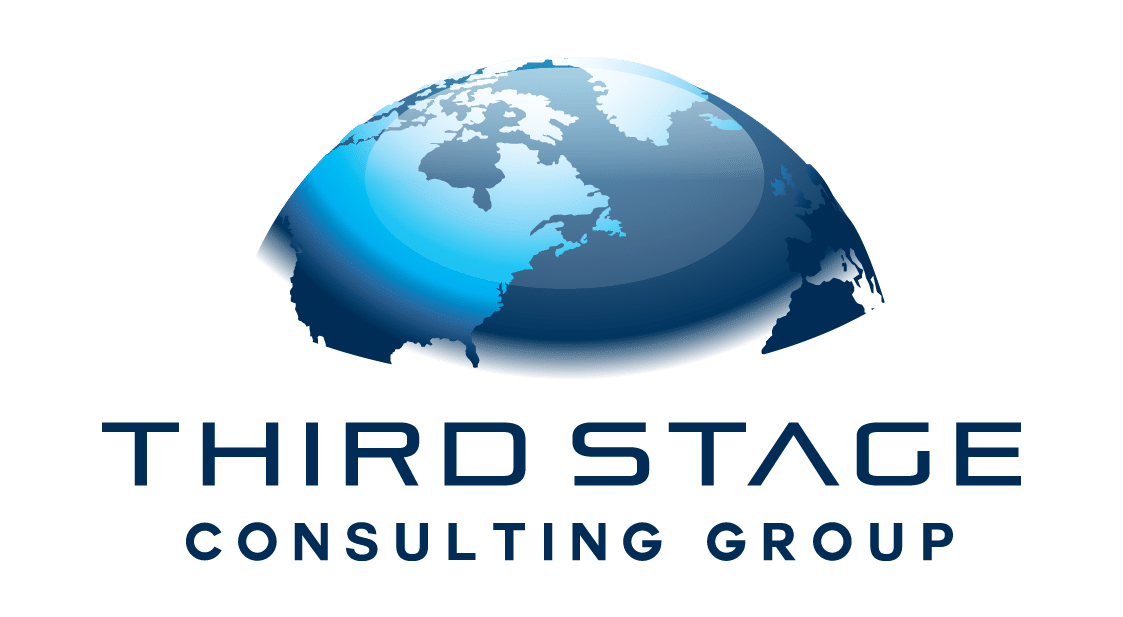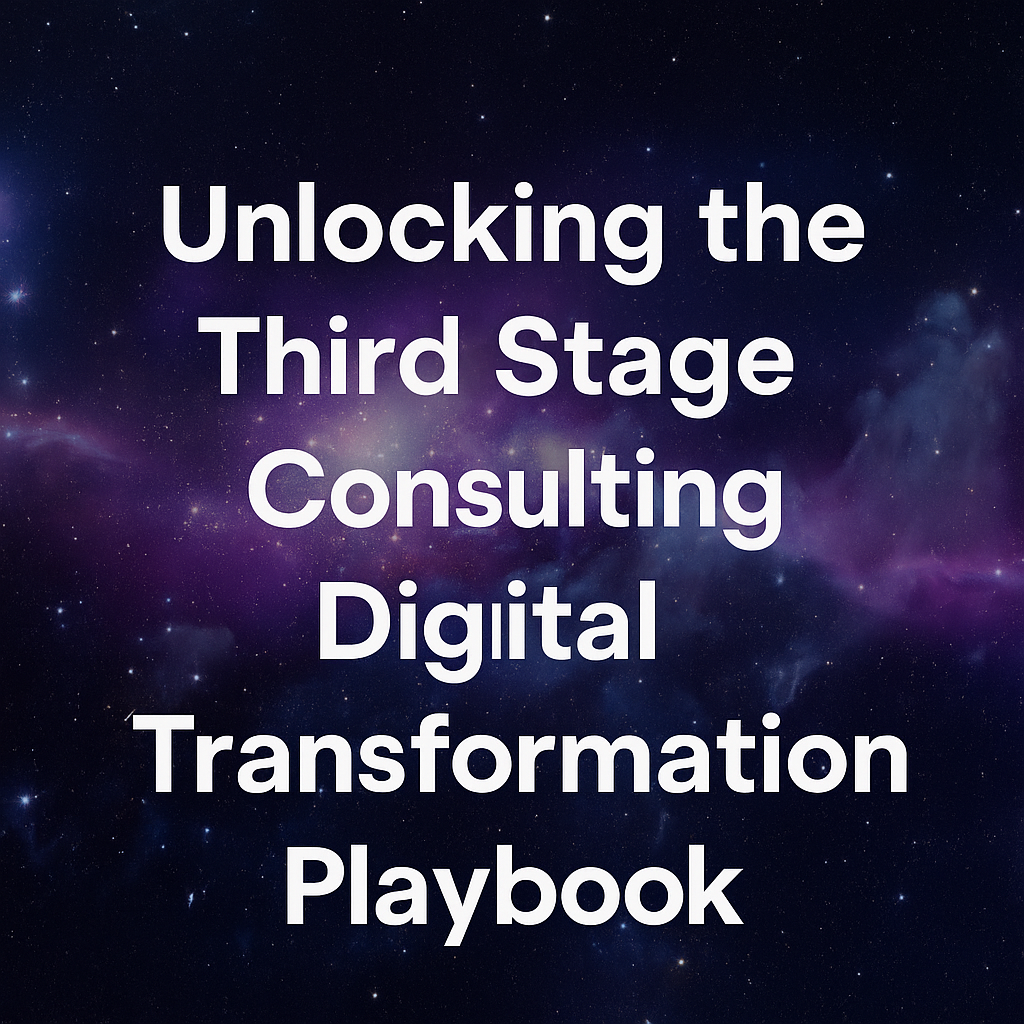Since founding Third Stage Consulting several years ago, we’ve refined and elevated our methodology through experience with more than 400 clients around the world — and counting over 1,000 implementations across our team’s collective background. Today, we’re lifting the curtain on the 10-step playbook that has become the backbone of our client engagements and digital transformation success stories.
If you want to avoid costly mistakes and dramatically improve your chances of a smooth, value-driven transformation, this playbook is designed for you. Let’s break down each of these ten critical steps — and don’t forget, you can download the full playbook on our website for a deeper dive.
Table of Contents
ToggleStep 1: Define Your Vision and Strategy
A powerful digital transformation starts with a clear, aligned vision. Many organizations already have a strategic plan, but far fewer translate that high-level strategy into a transformation-specific roadmap.
This is where a strategic articulation map comes in: connecting your corporate vision to transformation initiatives, clarifying which processes, technologies, and people changes will drive your success. By anchoring your efforts to a strategic framework, you set the tone for program governance, resource prioritization, and ultimately, your long-term business results.
Step 2: Conduct a Maturity Assessment
Before you can plan a successful transformation journey, you must know where you’re starting. A maturity assessment evaluates your existing processes, skills, organizational capabilities, and technology stack.
Think of it like plugging in your location before using GPS. Without this baseline, it’s impossible to build a realistic, achievable roadmap. Understanding your current maturity helps identify skill gaps, infrastructure weaknesses, and areas to build on — making sure your roadmap is grounded in reality, not wishful thinking.
Step 3: Map Customer Value and the Customer Journey
Even organizations that are not commercial enterprises — such as nonprofits or public sector agencies — have customers or stakeholders they serve. Mapping out the customer journey ensures that your transformation centers on delivering better outcomes for those you serve.
By understanding what customers expect, how they interact with you, and what makes their relationship with your organization “stick,” you can design a transformation that improves their experience, encourages self-service, and unlocks new channels of value creation.
Step 4: Establish a Process Taxonomy
Too many organizations underestimate how fragmented or undocumented their existing processes are. Step four focuses on building a clear process taxonomy: taking an inventory of all processes and subprocesses in the business.
This structured inventory helps you prioritize which processes to redesign, which deliver the most ROI, and which ones are pain points worth addressing. Rather than letting new technology dictate how you work, this step empowers your business to lead the change.
Step 5: Define Current-State Business Processes
After establishing your process taxonomy, dig deeper into understanding the current-state processes. Here, you focus on pain points, workflow inefficiencies, staffing levels, performance metrics, and the data you manage.
Documenting this level of detail — but not getting lost in hyper-granular steps yet — allows you to see what’s working, what’s not, and where future improvements can drive the most impact. Linking this analysis to your customer journey map ensures the transformation stays focused on value.
Step 6: Design Your Future Target Operating Model
Now that you know where you stand, it’s time to envision where you want to go. Your future target operating model should define how business processes will function, how roles might be redesigned, and what technologies you’ll leverage to support this future state.
For example, you might shift to a shared services model for finance or HR, consolidate functions across locations, or automate routine activities. This model becomes the blueprint for selecting systems, implementing changes, and structuring your workforce to align with your strategic objectives.
Step 7: Ensure Leadership and Organizational Alignment
This is a critical, parallel step that runs through the entire transformation effort. Organizational buy-in, leadership commitment, and stakeholder alignment must be secured from the outset — and continuously reinforced.
Why? Because misalignment in goals, priorities, or project ownership can derail even the most well-designed transformation. Getting everyone involved early fosters ownership, speeds up decision-making, and reduces costly delays once the implementation begins.
Step 8: Define Your Digital Strategy and Roadmap
With the foundation laid in the previous steps, you can now build a cohesive, realistic digital strategy and roadmap. This includes evaluating potential technologies, assessing their ROI, and understanding trade-offs.
A well-defined roadmap, supported by clear milestones and resource requirements, protects you from overspending, under-delivering, or picking solutions that don’t match your future operating model. It also helps you prioritize initiatives so you can deliver incremental value throughout the program, rather than waiting for a “big bang” go-live.
Step 9: Establish Program Delivery and Governance
Execution is where transformation efforts are made — or broken. Establishing robust program governance, a program management office (PMO), and oversight structures ensures your team stays on track.
This includes defining roles and responsibilities for internal resources, external vendors, data migration, training, change management, and decommissioning legacy systems. Many organizations mistakenly assume their software vendor will cover all of this, but true program delivery requires broader oversight that goes beyond the scope of a single implementation partner.
Step 10: Benefits Realization and Post-Go-Live Optimization
Finally, remember that your transformation shouldn’t stop at go-live. Benefits realization ensures you capture the intended value, measure performance, and continuously improve.
Whether you adopt a phased transformation or a single rollout, a post-go-live optimization phase helps identify what worked, what didn’t, and where you can refine processes, training, or technology. Benefits realization should be a continuous discipline, ensuring your investment keeps paying off long after the new system goes live.
Ready to Transform?
These ten steps represent the high-level backbone of the proven Third Stage Consulting playbook — a playbook designed to maximize your digital transformation’s success, reduce risk, and protect your investment.
If you’d like to explore the framework in more detail, get your free assessment here. Our team is always available to guide you deeper into the details of this methodology, drawing on decades of experience and thousands of project insights to help you build a better future.
If you have questions or want to discuss your specific situation, feel free to contact us — we’d be glad to help!






